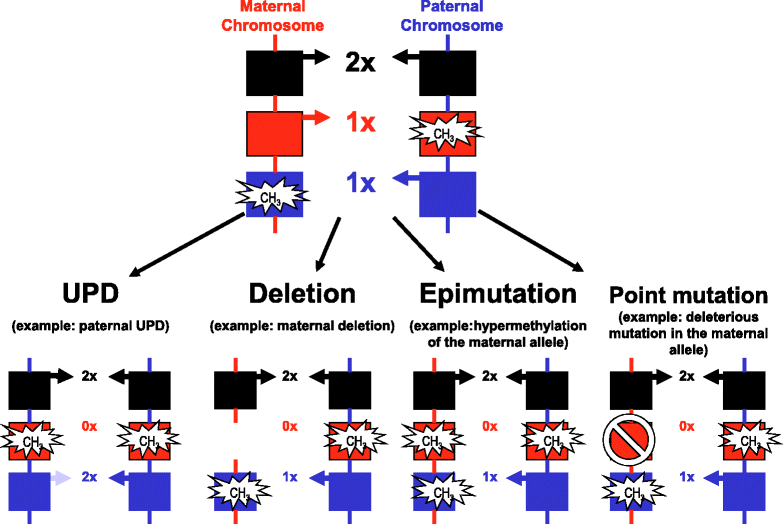Congenital imprinting disorders: EUCID.net - a network to decipher their aetiology and to improve the diagnostic and clinical care
- PMID: 25784961
- PMCID: PMC4362648
- DOI: 10.1186/s13148-015-0050-z
Congenital imprinting disorders: EUCID.net - a network to decipher their aetiology and to improve the diagnostic and clinical care
Abstract
Imprinting disorders (IDs) are a group of eight rare but probably underdiagnosed congenital diseases affecting growth, development and metabolism. They are caused by similar molecular changes affecting regulation, dosage or the genomic sequence of imprinted genes. Each ID is characterised by specific clinical features, and, as each appeared to be associated with specific imprinting defects, they have been widely regarded as separate entities. However, they share clinical characteristics and can show overlapping molecular alterations. Nevertheless, IDs are usually studied separately despite their common underlying (epi)genetic aetiologies, and their basic pathogenesis and long-term clinical consequences remain largely unknown. Efforts to elucidate the aetiology of IDs are currently fragmented across Europe, and standardisation of diagnostic and clinical management is lacking. The new consortium EUCID.net (European network of congenital imprinting disorders) now aims to promote better clinical care and scientific investigation of imprinting disorders by establishing a concerted multidisciplinary alliance of clinicians, researchers, patients and families. By encompassing all IDs and establishing a wide ranging and collaborative network, EUCID.net brings together a wide variety of expertise and interests to engender new collaborations and initiatives.
Keywords: EUCID.net; Epimutation; Imprinted genes; Imprinting disorders; Networking; Uniparental disomy.
Figures
References
Publication types
Grants and funding
LinkOut - more resources
Full Text Sources
Other Literature Sources



